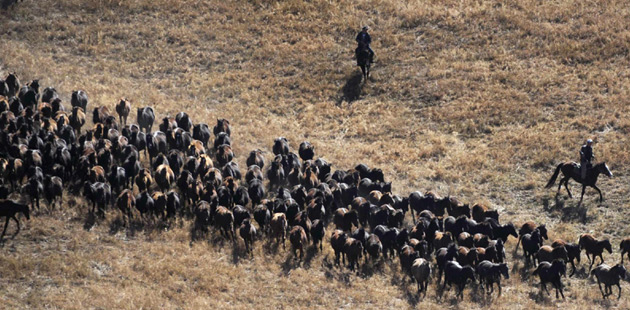China began cultivating millet 10,000 years ago
Updated: 2011-10-16 15:02
(Xinhua)
|
|||||||||||
SHIJIAZHUANG - Chinese archaeologists said Sunday that they have found evidence of the cultivation of glutinous millet in the northern province of Hebei that could date back to 10,000 years, the earliest evidence of people growing the crop in the world.
Lab results showed that remains of glutinous millet found at archaeological sites in Cishan village in the city of Wu'an were harvested during the Neolithic Era between 8,700 to 10,000 years ago, scientists with the Institute of Geology and Geophysics of China Academy of Sciences (IGGCAS) said at a cultural festival held in Wu'an on Sunday.
This means Cishan was the birthplace of the crop, archaeologists said.
They have also found remains of foxtail millet in the pits, which could date back to between 8,700 and 7,500 years. This would be the earliest evidence of the crop's cultivation, which means that Cishan was the birthplace of foxtail millet, too, said Lu Houyuan, an IGGCAS scientist.
Cultivating small-seeded dry crops was more prevalent than cultivating rice in prehistoric times, especially in China's semi-arid northern regions, Lu said.
A total of 50,000 kilograms of grains have been stored in 88 pits for thousands of years at the Cishan Site, a Neolithic site discovered in 1972.
In addition to grain remnants, pottery, stone tools, animal bones and bone artifacts have also been excavated from the site, which archaeologists believe will help their research in the emergence of agriculture in China.
Hot Topics
Libya conflict, Gaddafi, Oil spill, Palace Museum scandal, Inflation, Japan's new PM, Trapped miners, Mooncake tax, Weekly photos, Hurricane Irene
Editor's Picks

|

|

|

|

|

|







